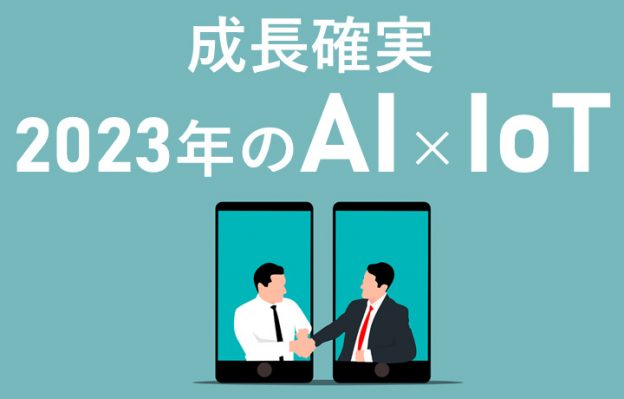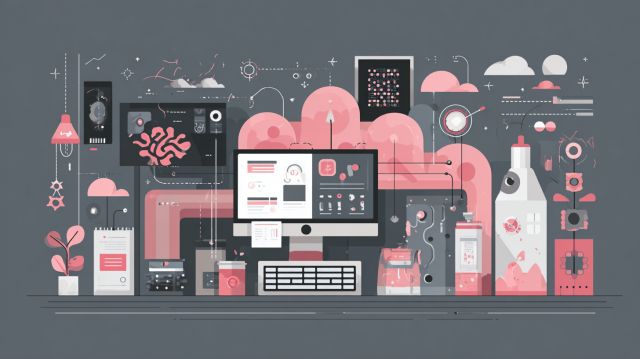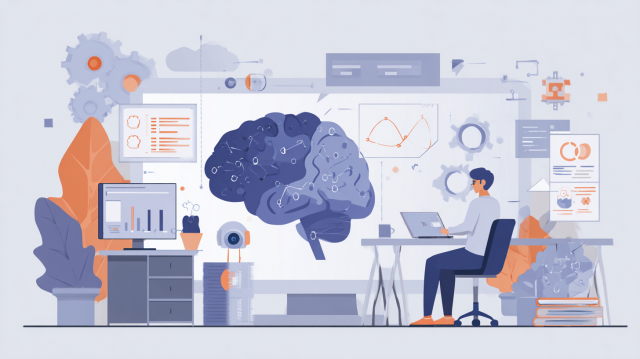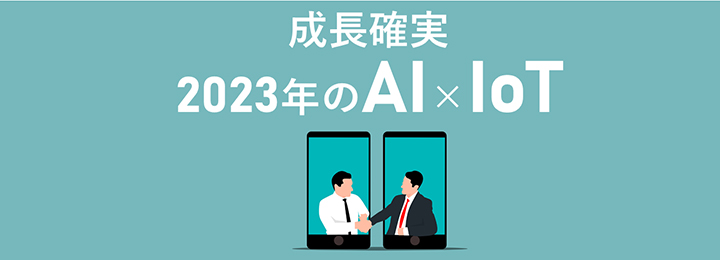
IoT is a technology that is rapidly being put to practical use alongside AI.
In this article, we will explain the basic meaning of IoT, its relationship with AI, and actual use cases.
We will also examine data on the current state of IoT device proliferation and future growth areas.
- Table of Contents
-
- 1. What is IoT?
- 1-1. What is IoT?
- 1-2. Mechanism of IoT
- 2. Synergy of IoT and AI
- 2-1. What is AI?
- 2-2. The Surprisingly Long History of AI
- 2-3. The Role of IoT in AI Development
- 2-4. The Synergistic Effects of Combining IoT and AI
- 3. Use Cases Combining IoT and AI
- 3-1. Home Healthcare Support with IoT Cameras
- 3-2. Loss Prevention with IoT Tags
- 3-3. Store-type Marketing with IoT Devices
- 3-4. Safety Driving Assistance with IoT Dash Cameras
- 4. Future Growth Areas in the IoT Market
- 4-1. Status of IoT Device Adoption
- 4-2. Future Growth Projections for the IoT Market
- 4-3. Further Expansion of IoT Expected with 5G
- 5. AI Consultations with Human Science
- 5-1. 48 million items of training data created
- 5-2. Resource management without crowdsourcing
- 5-3. The latest data annotation tools
- 5-4. Secure room in office
1. What is IoT?
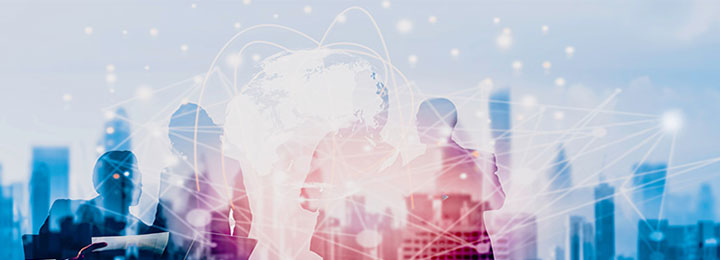
1-1. What is IoT?
IoT (Internet of Things) is an abbreviation for "Internet of Things." In Japanese, it is translated as "the Internet of Things." Until around the year 2000, the internet was primarily accessed through personal computers. With the evolution of communication technology, it has become common to connect to the internet using mobile devices such as mobile phones, smartphones, and tablets. Furthermore, in today's increasingly digital world, technologies that connect "things" like smart speakers, home appliances, and fitness equipment to the internet are gaining attention. This technology that connects such "things" to the internet is what is referred to as IoT.
1-2. Mechanism of IoT
Objects equipped with IoT are called IoT devices. IoT devices are equipped with sensors, cameras, microphones, and wireless communication, allowing them to detect the state and movement of objects and collect data. The basic mechanism of IoT is to transmit the collected information to people or other objects via the internet. It can also be said that IoT is a method of enabling the collection of vast amounts of information by connecting objects to the internet.
2. Synergy of IoT and AI
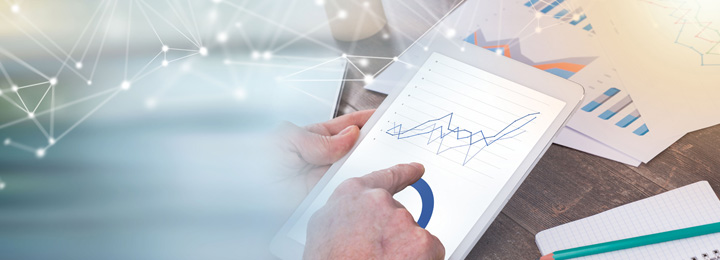
2-1. What is AI?
We will clarify the role of AI, which is sometimes confused with IoT. AI stands for "Artificial Intelligence." It functions as a brain that analyzes data, and its characteristic is that it makes judgments on the tasks assigned to it.
2-2. The Surprisingly Long History of AI
In fact, there is no clear definition of what is called AI. AI assistants like Siri and Alexa, which are built into current smartphones and smart speakers, are representative examples of AI. However, games that can compete against computers, which have existed since the 1970s, can also be referred to as AI. Unlike IoT, AI is not necessarily related to the internet in its meaning. It can be said that AI refers to something that plays the role of analyzing data and making judgments.
2-3. The Role of IoT in AI Development
The compatibility between IoT and AI is excellent. While IoT collects information, AI can analyze that information. By combining the two, AI can analyze the data collected by IoT and make effective use of it.
Let's take a look at the role of IoT in the process of AI development.
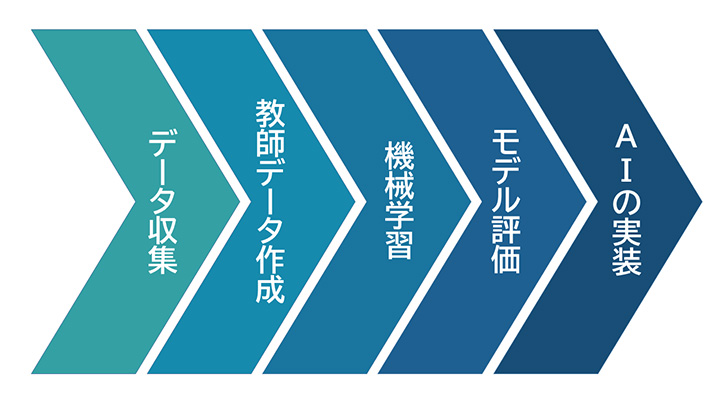
Before AI is developed, there is a process called machine learning. AI improves its accuracy by repeatedly reading training data, known as teacher data, during the machine learning process, and by remembering features and patterns from it. The source of this teacher data is the big data collected through IoT. The principle for achieving effectiveness in machine learning is to prepare as much teacher data as possible. The role of data collection through IoT in AI development is extremely significant.
For articles about machine learning and teacher data, click here
>>What is teacher data? Explanation from the relationship with AI, machine learning, and annotation to how to create it.
2-4. The Synergistic Effects of Combining IoT and AI
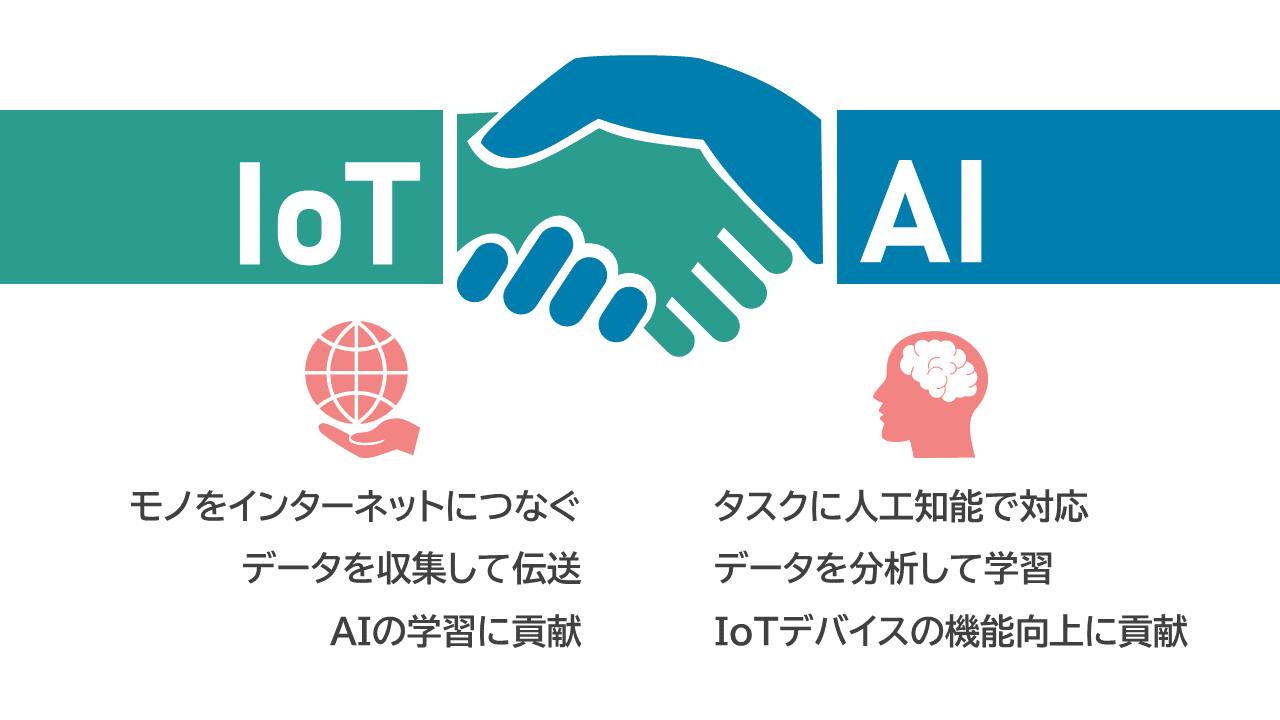
The benefits of improved AI accuracy are directly returned to the IoT devices that consumers possess. By combining IoT and AI, consumers can utilize more accurate AI, while developers can smoothly collect large amounts of data, creating a positive cycle for both parties.
3. Use Cases Combining IoT and AI
We will introduce actual use cases of IoT/AI.
3-1. Home Healthcare Support with IoT Cameras
IoT is being utilized for monitoring home care patients. An IoT camera, which can only be viewed by AI, is installed in the patient's home to monitor whether they have fallen or if they have been inactive for an extended period. To consider the patient's privacy, image analysis is conducted only after the AI detects an anomaly and obtains consent from the family. It is also possible for the patient to wear a smartwatch and press the nurse call button or perform vital checks from home.
>>Smart Home Medical Care | Home Medical Support Service
3-2. Loss Prevention with IoT Tags
To prevent the loss of items such as keys and wallets, a small IoT tag is attached and linked to the user's smartphone. This IoT tag is equipped with a technology called a beacon that uses Bluetooth, which has the capability to identify location information. When a user with a smartphone moves away from the item, the beacon's signal becomes unreachable, and a notification is sent to the smartphone. This allows the user to quickly return to the location where they dropped the item, for instance, if they accidentally leave it behind. Apple's AirTag is one of the IoT devices that utilizes this beacon technology.
>>Here is what happened when I mailed and tracked Apple's lost item tracker "AirTag"
3-3. Store-type Marketing with IoT Devices
This is another example of utilizing beacons. First, fixed beacon devices are installed in the store. Customers are asked to install a mobile app that connects with the beacon on their smartphones in advance. Customers who visit the store and are able to receive the beacon's signal can receive coupons and other novelties on the spot. By understanding customer behavior within the store, we can lead to more accurate marketing.
>>How the Retail Industry is Utilizing the Currently Popular IoT Technology "Beacon"
3-4. Safe Driving Support with IoT Dash Cameras
In drive recorders equipped with IoT, the information contained in the recorded footage is transmitted to the system via the internet. This allows AI to detect dangers and immediately notify the driver. As IoT-enabled vehicles, like connected cars, become more widespread in the future, we can also expect the provision of more accurate traffic prediction services.
>>Reducing Truck Driving Accidents with IoT! Hitachi to Introduce 100,000 Units of New System
4. What are the growth areas in the future IoT market?
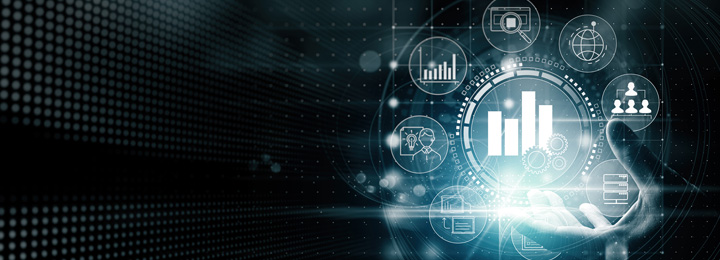
We will examine the current state of IoT device adoption and future growth areas.
4-1. Status of IoT Device Adoption
This is data that aggregates the number of IoT devices in the world by field.
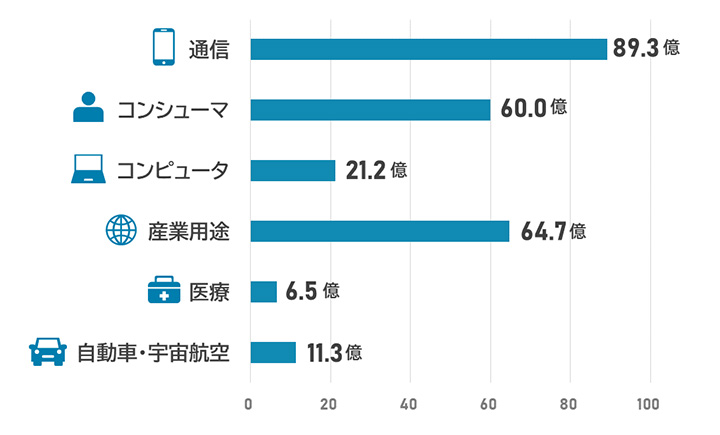
Source: Created by the author based on the 2021 Ministry of Internal Affairs and Communications White Paper
The most widespread area is the telecommunications sector, which includes mobile devices such as smartphones. It can be said that the IoT market in this sector is already mature. Following this, the adoption is progressing in industrial applications such as smart factories and smart cities, as well as in logistics, retail, consumer fields that include home appliances, fitness equipment, and smart speakers.
4-2. Future Growth Projections for the IoT Market
What areas are expected to grow in the future IoT market?
This is data predicting the annual average growth rate of the number of IoT devices up to 2023.
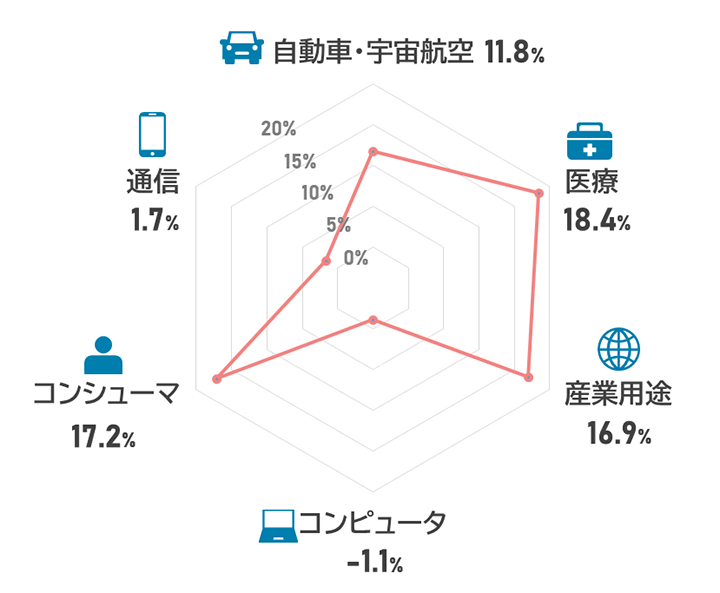
Source: Created by the author based on the 2021 Ministry of Internal Affairs and Communications White Paper
The highest growth rate is expected in the medical field. Demand related to the aging of the overall population is anticipated to increase. High growth rates are also expected to continue in the already advancing consumer sector and industrial applications. The automotive and aerospace sectors, which include autonomous driving and connected cars, will follow. In contrast, the telecommunications sector, which has already matured, is expected to see a decrease of 1.7%, and the computer sector is projected to decline by 1.1%, indicating low growth.
4-3. Further Expansion of IoT Expected with 5G
Commercial services for 5G, the fifth generation mobile communication system, began in Japan in 2020. Its maximum transmission speed is said to be 100 times faster (theoretical value) compared to the conventional 4G, allowing stable communication even when connecting various IoT devices to the internet simultaneously. With the evolution of communication environments, the expansion of the IoT market is expected to accelerate further.
5. For inquiries about AI×IoT, contact Human Science
5-1. 48 million items of training data created
"I want to implement AI, but I don’t know where to start."
"I don’t know what to request, even if I outsource."
If your company is struggling with either of these issues, please feel free to contact Human Science. Our company has been involved in AI model development projects across various industries, starting with natural language processing and extending to medical support, automobiles, IT, manufacturing, and construction, just to name a few. Through direct business with many companies, including GAFAM, we have provided over 48 million pieces of high-quality training data. No matter the industry, our team is prepared to handle anything from small-scale annotation projects to long-term ventures with 150 annotators.
>> Human Science’s Annotation Services
5-2. Resource management without crowdsourcing
At Human Science, we do not use crowdsourcing. Instead, projects are handled by personnel who are contracted with us directly. Based on a solid understanding of each member's practical experience and their evaluations from previous projects, we form teams that can deliver maximum performance.
5-3. The latest data annotation tools
One of the annotation tools introduced by Human Science is AnnoFab, which lets you receive progress checks and customer feedback on the cloud, even while the project is ongoing. By ensuring that work data cannot be saved on local machines, we demonstrate appropriate security measures.
5-4. Secure room in office
Human Science has a secure room that meets ISMS standards within our Shinjuku office, so we can handle even highly confidential projects on-site. The promise of of confidentiality is extremely important to us for any of our projects. We provide continuous security training to our staff, and we handle all information and data with the utmost care, even on remote projects.

 Text Annotation
Text Annotation Audio Annotation
Audio Annotation Image & Video Annotation
Image & Video Annotation Generative AI, LLM, RAG Data Structuring
Generative AI, LLM, RAG Data Structuring
 AI Model Development
AI Model Development In-House Support
In-House Support For the medical industry
For the medical industry For the automotive industry
For the automotive industry For the IT industry
For the IT industry